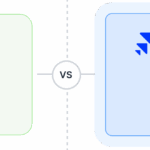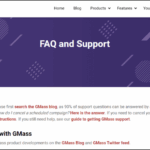Saleshandy vs Sendy: Key Differences Explained

Saleshandy vs Sendy are both email marketing tools, but they cater to different needs and functionalities, making them suitable for different types of users and businesses. One of the primary differences lies in their target audience and use cases. Saleshandy is designed primarily for sales teams and professionals who need to enhance their email outreach and engagement. It offers features such as email tracking, mail merge, and templates that help users optimize their communication with potential clients. Saleshandy focuses on improving sales productivity by providing insights into how recipients interact with emails, allowing users to follow up effectively based on engagement metrics.
On the other hand, Sendy is more geared towards businesses looking for a cost-effective solution for bulk email marketing. It is a self-hosted application that allows users to send newsletters and marketing emails through Amazon SES (Simple Email Service), which significantly reduces email sending costs. Sendy is ideal for businesses that have a large subscriber base and want to manage their email campaigns without incurring high fees associated with traditional email marketing services. It provides features such as list management, campaign tracking, and reporting, but it lacks some of the advanced sales-oriented functionalities that Saleshandy offers.
Target Audience and Use Cases
Saleshandy: Designed for Sales Teams
When considering the target audience, Saleshandy is specifically tailored for sales teams and professionals who are looking to enhance their outreach efforts. The platform is equipped with tools that allow users to track email opens, clicks, and replies, which are crucial metrics for sales professionals. By understanding how recipients engage with their emails, sales teams can tailor their follow-up strategies to improve conversion rates. Additionally, Saleshandy offers features such as mail merge, which enables users to personalize their emails at scale, making it easier to connect with potential clients on a more personal level. This focus on sales productivity and engagement makes Saleshandy an invaluable tool for professionals in the sales industry.
Related Topic: Saleshandy vs Mystrika: Key Differences Explained
Saleshandy vs Mystrika: Key Differences ExplainedSendy: Geared Towards Bulk Email Marketing
In contrast, Sendy is designed for businesses that require a robust solution for bulk email marketing. It is particularly beneficial for organizations that have a large subscriber base and need to send out newsletters, promotional emails, or other marketing communications regularly. The self-hosted nature of Sendy allows businesses to take advantage of Amazon SES, which significantly reduces the cost of sending emails compared to traditional email marketing services. This makes Sendy an attractive option for businesses that prioritize cost-effectiveness while still needing to manage extensive email campaigns. However, it is important to note that Sendy may not offer the same level of engagement tracking and sales-oriented features that Saleshandy provides, which could be a consideration for businesses that also have sales objectives.
Pricing Model
Saleshandy: Subscription-Based
Another key difference between Saleshandy and Sendy is their pricing models. Saleshandy operates on a subscription basis, which means that users pay a recurring fee to access the platform's features. This pricing structure can be more suitable for smaller teams or individual users who need specific features for email outreach. The subscription model allows users to access updates and new features without incurring additional costs, making it a convenient option for those who want to stay current with the latest tools and functionalities. However, for businesses that may not require all the features offered by Saleshandy, the subscription cost could be seen as a drawback, especially if they are looking for a more budget-friendly solution.
Sendy: One-Time Purchase Plus Email Costs
On the other hand, Sendy requires a one-time purchase for the software, which can be appealing for businesses that want to avoid ongoing subscription fees. After the initial purchase, users will incur additional costs for sending emails through Amazon SES, but these costs are generally lower than those associated with traditional email marketing services. This pricing model makes Sendy particularly attractive for businesses that send a high volume of emails, as the overall cost can be lower in the long run. However, it is essential for potential users to consider their email sending needs and calculate whether the one-time purchase plus email costs will be more economical than a subscription-based model like that of Saleshandy.
Related Topic: Saleshandy vs Instantly vs Woodpecker: Key Differences
Saleshandy vs Instantly vs Woodpecker: Key DifferencesUser Interface and Ease of Use
Saleshandy: User-Friendly for Sales Professionals
When it comes to user interface and ease of use, Saleshandy excels in providing a user-friendly experience tailored for sales professionals. The platform is designed with an intuitive interface that allows users to quickly navigate through features such as email tracking, analytics, and campaign management. This ease of use is particularly beneficial for sales teams that may not have extensive technical knowledge, as it enables them to focus on their outreach efforts without getting bogged down by complicated software. The streamlined design of Saleshandy ensures that users can efficiently manage their email campaigns and track engagement metrics, ultimately enhancing their productivity and effectiveness in reaching potential clients.
Sendy: Requires Technical Knowledge
In contrast, Sendy may require a bit more technical knowledge to set up and manage, especially since it is a self-hosted application. Users need to have some familiarity with web hosting and server management to get the most out of Sendy. While the platform does offer powerful features for bulk email marketing, the initial setup process can be daunting for those who are not technically inclined. Additionally, users may need to troubleshoot issues related to server configurations or email deliverability, which could pose challenges for businesses without dedicated IT support. As a result, while Sendy offers robust capabilities for email marketing, its user interface may not be as accessible for all users compared to the more straightforward design of Saleshandy.
Integrations
Saleshandy: Seamless CRM Integrations
Integrations are another critical aspect to consider when comparing Saleshandy vs Sendy. Saleshandy offers seamless integration with various CRM systems and productivity tools, which is essential for sales teams looking to streamline their workflows. The ability to connect with popular CRMs allows users to manage their contacts, track interactions, and analyze data all in one place. This level of integration is particularly valuable for sales professionals who rely on CRM systems to manage their leads and customer relationships. By integrating with these tools, Saleshandy enhances the overall efficiency of sales processes and enables users to make data-driven decisions based on their email outreach efforts.
Related Topic: Saleshandy vs GMass: Key Differences Explained
Saleshandy vs GMass: Key Differences ExplainedSendy: Limited Integration Options
On the other hand, Sendy may not have the same level of connectivity with CRM systems, which could be a drawback for users who rely heavily on integrated systems for their marketing efforts. While Sendy does offer some integrations, they are generally more limited compared to the extensive options available with Saleshandy. This limitation could pose challenges for businesses that want to create a cohesive marketing strategy that incorporates various tools and platforms. As a result, users may need to manually manage their contacts and data across different systems, which could lead to inefficiencies and potential errors in their email marketing campaigns.
Comparison Table
| Feature | Saleshandy | Sendy |
|---|---|---|
| Target Audience | Sales Teams | Businesses for Bulk Email |
| Pricing Model | Subscription | One-Time Purchase + SES Costs |
| User Interface | User-Friendly | Requires Technical Knowledge |
| Integrations | Seamless with CRMs | Limited Options |
Conclusion
Choosing the Right Tool for Your Needs
In summary, the key differences between Saleshandy and Sendy revolve around their target audience, pricing models, user interfaces, and integration capabilities. Saleshandy is tailored for sales professionals seeking to enhance their outreach and engagement, while Sendy is a cost-effective solution for businesses focused on bulk email marketing. The choice between the two ultimately depends on the specific needs and goals of the user or organization. For sales teams that require advanced tracking and engagement features, Saleshandy may be the better option. Conversely, for businesses looking to manage large email campaigns at a lower cost, Sendy could be the ideal choice. By carefully evaluating the features and functionalities of both platforms, users can make an informed decision that aligns with their marketing objectives and budget constraints.
If you want to discover other articles similar to Saleshandy vs Sendy: Key Differences Explained, you can visit the Tools and Reviews category.

Related Posts: